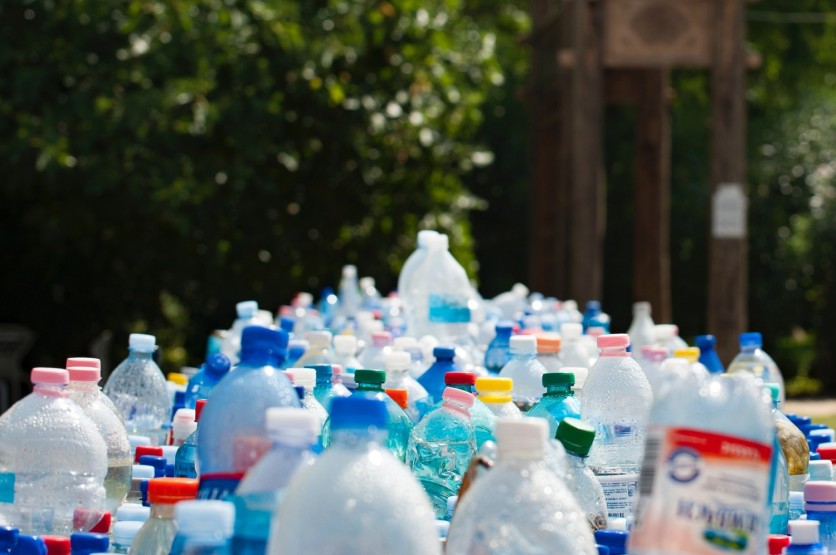
It is no secret that plastic is one of the most significant problems facing the planet. It was recently calculated that the total amount of plastic produced globally was 8.3 billion tons. But, even more alarmingly, 6.3 billion tons of that had become plastic waste.
Plastic is now everywhere and found in every ecosystem in increasing amounts. For example, around 25 million tons of plastic end up in the ocean every year. A recent study estimated that by 2030 that figure could reach 53 million tons a year.
Many believe that recycling is the key and a potential solution to the problem. Unfortunately, this is not currently the case. The majority of plastic that doesn't end up in the environment is either stuck in landfills or incinerated. This latter option ensures that it doesn't wash out to sea but is harmful to the environment.
So far, of the 8.3 billion tons produced, only 9% have been recycled. A study in 2018 found that in the US, 91.3% of plastic created in the country was unrecycled. The situation is not improving, and alternate solutions are urgently required.
In more positive news, the OECD found that the global production of plastic created from recycled material rose from 6.8 million tons in 2000 to 29.1 Mt in 2019. However, that still only represents 6% of total plastic production. The problem stems from the fact plastic waste is currently growing at 9% a year.
Thanks to incineration, around 12% of all plastic have been removed from the ecosystem. The obvious flaw in this method is the large carbon emissions that result. This exacerbates one of the other significant issues facing the planet - the climate crisis.
The environment is filled with plastic and warmed by carbon dioxide. Can science help?
Several solutions have been explored and developed. For example, some biodegradable plastics can be made 'compostable', which means they can be turned into compost alongside organic waste. This is still not ideal as it generally requires industrial composting and isn't usually suitable for home use.
However, other approaches are proving successful in tackling multiples issues at once. A great example is Fusion One, a Canadian company that has developed technologies that make it possible to turn plastic into environmentally friendly hydrogen.
Fusion One's CEO, Elliott Talbott, says, "Levels of plastic waste continue to rise, and current recycling strategies aren't working. Not all plastic can be recycled, and it can be an expensive process with questionable results. One solution has been incineration, but that adds to carbon emissions and has to be carried out on a vast scale at a cost of hundreds of millions. Our idea was to tackle both problems at once and turn plastic into environmentally friendly green hydrogen at a more local scale.
"Essentially, we can collect curbside plastic and process it using our HydroPlas reactor. The thermochemical treatment generates excess heat that is utilised in the generation of power which is then exported to the electricity grid. The process also creates Synthesis Gas, or SynGas, which has a very high hydrogen content. The hydrogen is separated and stored in high pressure mobile storage ready to be delivered to gas stations or depots."
The demand for hydrogen over the coming decades is set to soar
This process is particularly appealing as it removes plastic from the environment and turns it into green hydrogen. Talbott says, "Hydrogen is ideal for commercial fuel cell vehicles or large transport infrastructures, such as a bus network for cities looking for an effective way to reduce carbon emissions. There is also an international drive led by the United Nation to switch to hydrogen instead of natural gas with Europe spending billions on supporting infrastructure."
The world is looking to decrease emissions at the same time as energy demands soar. This situation will continue for decades, certainly until 2050, as countries look to hit net-zero pledges. A mix of renewable and eco-friendly options will be the only way to decarbonize, and hydrogen will play an increasingly prominent role.
Demand for hydrogen has tripled since the mid-70s, which is impressive considering the technology for its extraction was expensive and came almost entirely from fossil fuels. However, that looks set to change thanks to new technologies such as those developed by Fusion One.
A report by the International Renewable Energy Agency predicted that demand for green hydrogen would take off in the 2030s and account for 12% of global energy by 2050. This rise has already started across multiple sectors. Light transportation is a good example, with a recent Wood Mackenzie report saying demand for hydrogen in the mobility sector had grown 2450%.
"Using hydrogen is appealing as the only emissions are oxygen and water," Talbott points out. "The fact that we now have the capability to turn discarded plastics into hydrogen is remarkable, and I am proud of what we have achieved so far. We've already built, tested, and run a version of our proprietary system and are now raising funds to scale up and go fully operational at several sites across America."
"We need to clear plastic from the environment and cut carbon emissions. The fact that we can do both is incredible and shows how far the technology has come."
The planet needs humanity to change how it consumes and to stop polluting. With plastic found at the top of Everest and the bottom of the Mariana Trench, something needs to be done. Companies like Fusion One show that science can help solve these problems given time, resources, and expertise. Of course, not everyone will be able to help with two significant global issues simultaneously, but all developments add to the overall solution.




